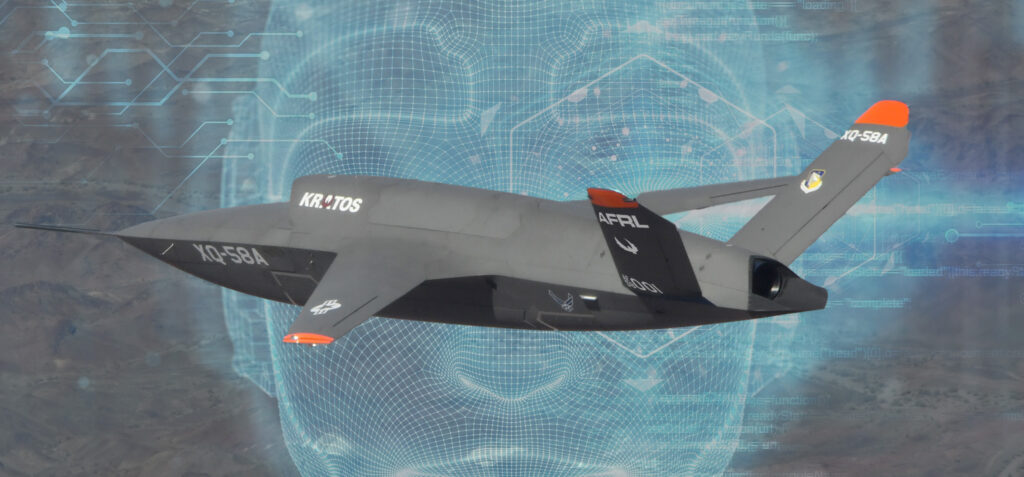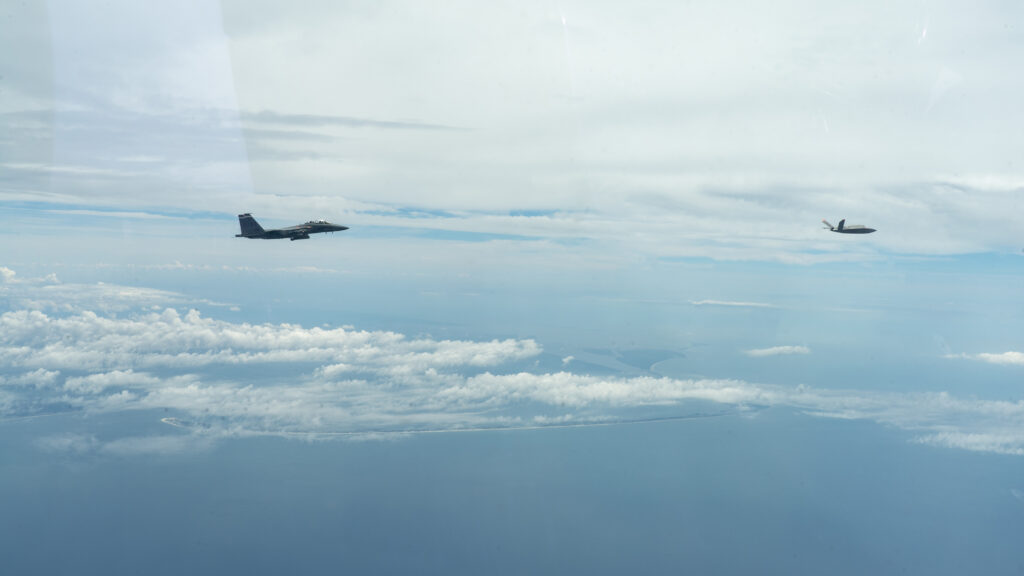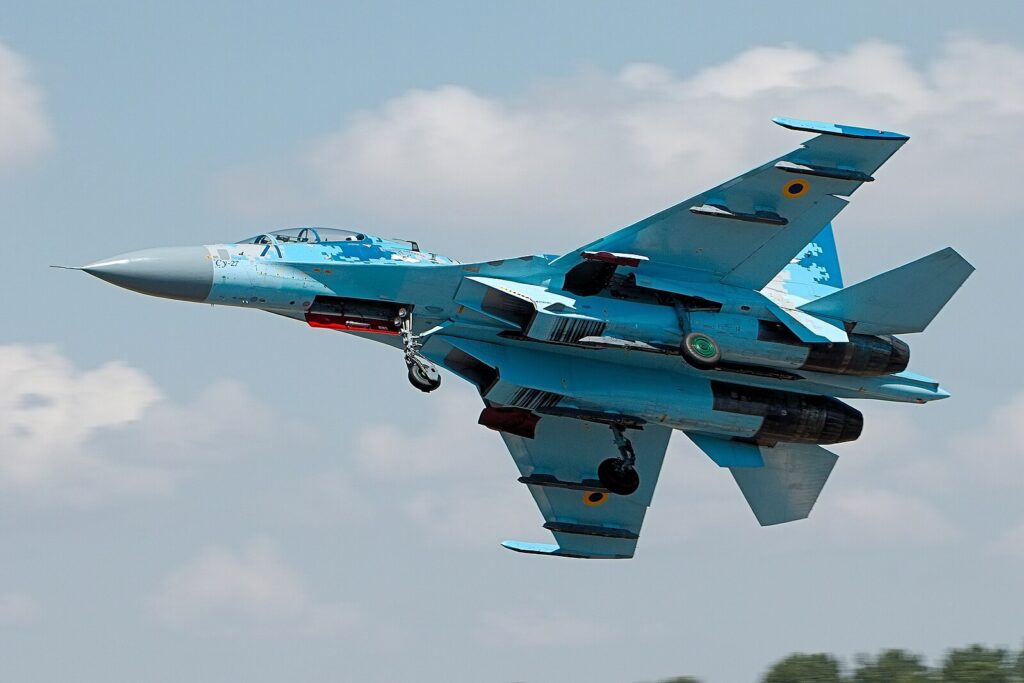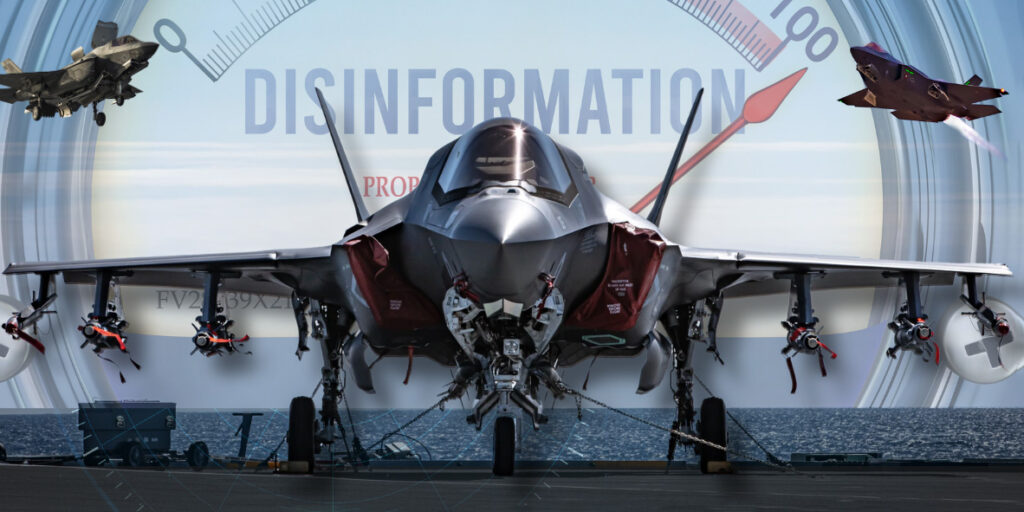America’s AI-controlled XQ-58 Valkyrie flies air combat exercises
- By Alex Hollings
Share This Article

Last month, the Air Force’s stealthy and inexpensive XQ-58 Valkyrie drone successfully completed a three-hour air combat exercise with nothing but artificial intelligence (AI) at the stick. This announcement comes on the heels of a number of significant successes from the Air Force’s efforts to develop AI pilots, known as agents, for a variety of operational roles ranging from flying AI-enabled drones alongside crewed aircraft to fielding an advanced auto-pilot to ride shotgun in the cockpit.
The test, which was announced on August 3, took place at Eglin Air Force Base in Florida on July 25. Eglin is the same installation in which the Air Force is currently installing AI agents into a half dozen combat-coded F-16s to give the artificial intelligence the opportunity to ride in the cockpit with real fighter pilots in a variety of exercises. This effort, dubbed Project Viper Experimentation and Next-Gen Operations Mode – or VENOM – is an important step toward fielding the Air Force’s Next Generation Air Dominance (NGAD) fighter, which is to be an air superiority platform designed to fly alongside a pack of AI-enabled drones for support.
Last December, the Air Force’s heavily modified X-62A, a thrust-vectoring F-16 with a unique fly-by-wire control system, also successfully completed a series of air combat exercises with AI in control. In fact, the AI algorithms leveraged in the recent Valkyrie flight test was the same as the one leveraged in the VISTA last December, though it’s matured a great deal since then thanks to “millions of hours in high fidelity simulation events.”
While details about the XQ-58’s AI-controlled exercise remain sparse, the Air Force did note that the AI agent wasn’t just going through the motions. The test included some sort of challenge the AI needed to overcome.
“The mission proved out a multi-layer safety framework on an AI/ML-flown uncrewed aircraft and demonstrated an AI/ML agent solving a tactically relevant ‘challenge problem’ during airborne operations,” Col. Tucker Hamilton, Department of the Air Force AI Test and Operations chief, said in a press release. “This sortie officially enables the ability to develop AI/ML agents that will execute modern air-to-air and air-to-surface skills that are immediately transferrable to other autonomy programs.”
The XQ-58 is not the only aircraft being developed for autonomous AI-driven operations, but it may be the most cost-effective. Details on the Valkyrie’s performance are nebulous, but it’s been reported that this low-observable subsonic drone has a maximum range of 3,000 miles, a service ceiling of 45,000 feet, and a potential payload capacity of 6,000 pounds. According to Kratos, the firm that designed and built the platform, they can deliver these drones for as much as $6.5 million a piece, or as little as just $2 million if ordered in sufficient numbers.

When it comes to reusable combat aircraft, that could be seen as an absolute steal. A single Tomahawk cruise missile, which can only be used once, rings it at more than $1.5 million and the Navy has a number of single-use missiles that cost tens of millions of dollars.
Fielding AI-enabled reusable drones for less than the cost of many single-use missiles would be a very big deal, especially as the Air Force continues its new push toward what they call “affordable mass,” which means dramatically increasing the volume of American aircraft without relying solely on high-dollar platforms like the F-35 and forthcoming NGAD fighter.
“The Kratos/AFRL team is pushing the envelope in these truly uncharted waters, continuing to evolve the capability and drive affordability in the CCA class where mission capability and effectiveness is achieved through a combination of individual and distributed CCA capability plus mass of aircraft,” explained Steve Fendley, President of Kratos Unmanned Systems Division, in a press release. “Wargames and analyses consistently report that mass is the solution to enable winning in today’s conflict arena and that a lower count of exquisite systems consistently fails. Kratos is laser-focused on the disruptive, affordable (enabled by simple and elegant) solution set.”
Read more from Sandboxx News
Related Posts
Sandboxx News Merch
-

A-10 ‘Thunderbolt Power’ Framed Poster
$45.00 – $111.00 Select options This product has multiple variants. The options may be chosen on the product page -

‘Kinetic Diplomacy’ Coaster (1)
$7.00 Add to cart -

‘Sandboxx News’ Camo Trucker Hat
$29.00 Select options This product has multiple variants. The options may be chosen on the product page

Alex Hollings
Alex Hollings is a writer, dad, and Marine veteran.
Related to: Airpower

Where do NATO reporting names come from?

The A-12 Avenger II would’ve been America’s first real ‘stealth fighter’

Why media coverage of the F-35 repeatedly misses the mark

It took more than stealth to make the F-117 Nighthawk a combat legend
Sandboxx News
-

‘Sandboxx News’ Trucker Cap
$27.00 Select options This product has multiple variants. The options may be chosen on the product page -

‘AirPower’ Classic Hoodie
$46.00 – $48.00 Select options This product has multiple variants. The options may be chosen on the product page -

‘AirPower’ Golf Rope Hat
$31.00 Select options This product has multiple variants. The options may be chosen on the product page -

‘Sandboxx News’ Dad Hat
$27.00 Select options This product has multiple variants. The options may be chosen on the product page
